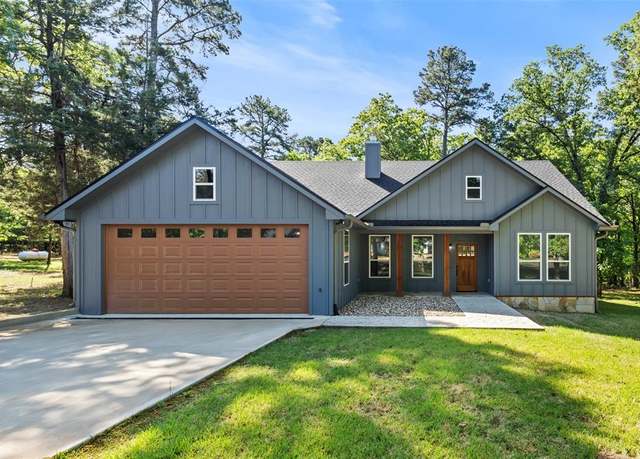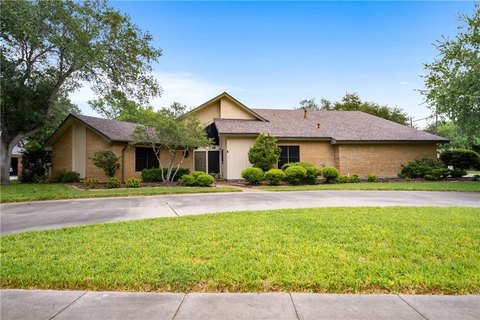It was a chilly fall afternoon when Lily gave her living room a makeover. She loved her apartment but had always felt that the walls were plain and lacked personality. They were functional, sure, but they didn’t reflect the warmth and character she envisioned. After weeks of browsing design blogs, she stumbled upon a living room photo with bold, textured wall panels. The space looked sophisticated and welcoming, with rich, modern textures that added depth and drama. At that moment, she realized—that wall panels were the perfect solution.
Once associated with traditional and formal spaces, wall panels have evolved into a versatile design trend that adds style and functionality to modern interiors. From sleek contemporary designs to luxurious, classical treatments, wall panels have become a popular way to transform the look and feel of any room. This article explores the different types of wall panels, their benefits, and how they’ve become a central element in interior design, supported by trends, statistics, and insights into why they’re so popular today.
What Are Wall Panels?
Wall panels are decorative elements that cover or accentuate the surface of a wall. They are typically made from various materials, including wood, MDF, PVC, metal, and even fabric, and come in multiple designs. The panels can be large or small, covering entire walls or acting as accents. Historically, wall panels were used to insulate homes and protect walls from damage, but in modern interior design, they’ve become primarily a design feature.
Wall panels come in many forms, such as:
- Flat Panels are smooth, simple panels often made from MDF or plywood. They offer a clean, sleek look and are easy to install.
- Textured Panels: These feature patterns or textures like 3D designs, geometric shapes, or faux brick. They often create focal walls in living rooms, bedrooms, or entryways.
- Wooden Panels: Wood remains one of the most timeless materials for wall panels, offering a rustic, warm feel.
- Upholstered Panels: Often made from fabric or leather, these panels can soften the acoustics in a room and provide a luxurious touch.
- PVC Panels are low-maintenance, water-resistant, and often used in bathrooms or kitchens for a modern look.
The Rise of Wall Panels in Modern Design
In the past few years, wall panels have undergone a major resurgence. Once considered old-fashioned or overly traditional, they are now embraced for their versatility and ability to enhance aesthetics and functionality in interior design. According to a 2022 study by Statista, 42% of U.S. homeowners renovated their interiors in the past five years, with 28% of these renovations including wall treatments, particularly wall paneling.
The primary driver of this trend has been the desire for more personalized, dynamic, and stylish spaces. Homeowners and designers are increasingly looking for innovative ways to add texture, depth, and warmth to rooms without needing expensive remodeling. Wall panels have become a solution, offering a simple yet impactful transformation that can be completed in a weekend.
The Aesthetic Appeal
One of the main reasons wall panels have become so popular is their ability to enhance the overall aesthetic of a room. The versatility of wall panel designs allows them to fit into a wide range of styles, from minimalist and industrial to traditional and coastal. Whether you choose sleek, modern panels to complement your contemporary décor or opt for vintage wood panels to add a cozy, rustic feel, wall panels can completely change the atmosphere of a space.
A 2023 survey by Houzz found that 58% of homeowners who updated their walls with panels said it significantly enhanced the room’s overall style and appeal. From textured designs to contrasting colors, wall panels add visual interest and can create a focal point in otherwise plain spaces.
Functionality Meets Design
Beyond aesthetics, wall panels also serve a functional purpose. They can:
- Improve Acoustics: Textured or upholstered panels can help absorb sound, making them a popular choice for home theaters, music rooms, and offices. A study by The Acoustic Society found that 33% of homeowners add wall panels to reduce home noise.
- Conceal Imperfections: Wall panels can hide imperfections like cracks, dents, or uneven surfaces. They can cover drywall seams or aged plaster, offering a quick and budget-friendly solution for homes with less-than-perfect walls.
- Increase Insulation: In colder climates, wooden or thicker wall panels can add an extra insulation layer, keeping rooms warmer in winter. For example, using panels in a room with high ceilings can improve thermal efficiency by adding additional layers that reduce heat loss.
- Add Durability: Materials like PVC and wood are durable, water-resistant, and easy to clean. This makes them ideal for kitchens, bathrooms, and high-traffic areas where durability is essential.
Popular Types of Wall Panels
There are various styles and materials to choose from when it comes to wall paneling. Below are some of the most popular types, each offering its unique benefits:
- 3D Wall Panels
3D wall panels have exploded in popularity, particularly in modern homes. These panels add depth and texture to walls, creating a dynamic look that makes a statement. They’re made from various materials, including MDF, gypsum, and eco-friendly materials like bamboo.
A 2023 report from Grand View Research projected that the global market for 3D wall panels will reach $8.1 billion by 2027, reflecting their increasing demand in residential and commercial spaces. The panels are often used in living rooms, offices, and lobbies to create a visually striking focal point.
- Wooden Wall Panels
Wooden wall panels are a timeless option that exudes warmth and natural beauty. From classic tongue-and-groove paneling to reclaimed wood accents, wooden panels are a favorite for rustic, Scandinavian, or farmhouse interiors. According to a 2022 survey by Interior Design Magazine, wood paneling is the most preferred choice for creating a natural, organic look, with 40% of designers selecting it for residential projects.
- PVC Panels
PVC wall panels are often used in spaces that need moisture resistance, such as bathrooms, kitchens, or laundry rooms. These panels are affordable, easy to maintain, and water-resistant, making them an ideal choice for high-humidity areas. They also come in various designs, from faux wood to marble, allowing homeowners to achieve a chic look on a budget.
- Fabric and Upholstered Panels
For a more luxurious, soft look, fabric panels can create a comfortable, plush environment. Upholstered panels are often used in bedrooms, lounges, and media rooms. They are visually appealing and can improve the room’s acoustics. A 2022 survey by Archinect revealed that 22% of interior designers increasingly use fabric wall panels for their aesthetic and soundproofing benefits.
How to Incorporate Wall Panels Into Your Home
Installing wall panels can be a DIY project, or you can hire a professional for more complex installations. Here are some ideas for incorporating them into your home:
- Accent Walls: Choose one wall to highlight with bold, textured panels. This works especially well in living rooms, dining rooms, and bedrooms.
- Full Wall Coverage: Cover an entire wall with panels for a more dramatic effect. This is often used in offices or home theaters where style and acoustics matter.
- Wainscoting: Classic wainscoting, made from wood or MDF, can cover the walls’ lower half. This is a popular choice in entryways, hallways, and dining rooms.
- Ceiling Panels: Extend the paneling design to the ceiling to add depth and a touch of elegance. This is especially effective in rooms with high ceilings.
- Bathrooms and Kitchens: Use PVC or water-resistant materials to enhance walls in kitchens and bathrooms without compromising style.
Conclusion: The Enduring Appeal of Wall Panels
Wall panels are a powerful design element combining aesthetic appeal and practical benefits. From the timeless charm of wood paneling to the sleek elegance of 3D designs, wall panels are an excellent way to elevate your space. Their growing popularity, affordability, and versatility have become an essential component of modern interior design. Whether renovating a small room or undertaking a full-scale home makeover, wall panels offer a transformative solution that will add depth, warmth, and character to any interior.












 Afrikaans
Afrikaans Shqip
Shqip አማርኛ
አማርኛ العربية
العربية Հայերեն
Հայերեն Azərbaycan dili
Azərbaycan dili Euskara
Euskara Беларуская мова
Беларуская мова বাংলা
বাংলা Bosanski
Bosanski Български
Български Català
Català Cebuano
Cebuano Chichewa
Chichewa 简体中文
简体中文 繁體中文
繁體中文 Corsu
Corsu Hrvatski
Hrvatski Čeština
Čeština Dansk
Dansk Nederlands
Nederlands English
English Esperanto
Esperanto Eesti
Eesti Filipino
Filipino Suomi
Suomi Français
Français Frysk
Frysk Galego
Galego ქართული
ქართული Deutsch
Deutsch Ελληνικά
Ελληνικά ગુજરાતી
ગુજરાતી Kreyol ayisyen
Kreyol ayisyen Harshen Hausa
Harshen Hausa Ōlelo Hawaiʻi
Ōlelo Hawaiʻi עִבְרִית
עִבְרִית हिन्दी
हिन्दी Hmong
Hmong Magyar
Magyar Íslenska
Íslenska Igbo
Igbo Bahasa Indonesia
Bahasa Indonesia Gaeilge
Gaeilge Italiano
Italiano 日本語
日本語 Basa Jawa
Basa Jawa ಕನ್ನಡ
ಕನ್ನಡ Қазақ тілі
Қазақ тілі ភាសាខ្មែរ
ភាសាខ្មែរ 한국어
한국어 كوردی
كوردی Кыргызча
Кыргызча ພາສາລາວ
ພາສາລາວ Latin
Latin Latviešu valoda
Latviešu valoda Lietuvių kalba
Lietuvių kalba Lëtzebuergesch
Lëtzebuergesch Македонски јазик
Македонски јазик Malagasy
Malagasy Bahasa Melayu
Bahasa Melayu മലയാളം
മലയാളം Maltese
Maltese Te Reo Māori
Te Reo Māori मराठी
मराठी Монгол
Монгол ဗမာစာ
ဗမာစာ नेपाली
नेपाली Norsk bokmål
Norsk bokmål پښتو
پښتو فارسی
فارسی Polski
Polski Português
Português ਪੰਜਾਬੀ
ਪੰਜਾਬੀ Română
Română Русский
Русский Samoan
Samoan Gàidhlig
Gàidhlig Српски језик
Српски језик Sesotho
Sesotho Shona
Shona سنڌي
سنڌي සිංහල
සිංහල Slovenčina
Slovenčina Slovenščina
Slovenščina Afsoomaali
Afsoomaali Español
Español Basa Sunda
Basa Sunda Kiswahili
Kiswahili Svenska
Svenska Тоҷикӣ
Тоҷикӣ தமிழ்
தமிழ் తెలుగు
తెలుగు ไทย
ไทย Türkçe
Türkçe Українська
Українська اردو
اردو O‘zbekcha
O‘zbekcha Tiếng Việt
Tiếng Việt Cymraeg
Cymraeg isiXhosa
isiXhosa יידיש
יידיש Yorùbá
Yorùbá Zulu
Zulu